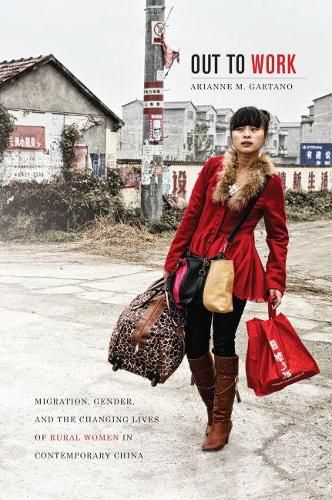Readings Newsletter
Become a Readings Member to make your shopping experience even easier.
Sign in or sign up for free!
You’re not far away from qualifying for FREE standard shipping within Australia
You’ve qualified for FREE standard shipping within Australia
The cart is loading…






Out to Work is a fresh, engaging account of the lives of a group of migrant women who, while in their teens, moved from rural towns to Beijing to take up work as maids, office cleaners, hotel chambermaids, and migrant schoolteachers. Part of the vanguard of China’s great rural-urban migration in the 1990s, these women were deprived of an education because their parents were unable to pay school fees for both sons and daughters. They also faced strong objections from parents, who feared for their daughters’ safety and reputations.
This multifaceted exploration of migrant women’s lives demonstrates how the intersection of gendered norms and rural-urban inequalities shaped the women’s identities and desires and makes clear the palpable material consequences the decision to migrate made in their lives. Overall, the book convincingly shows that migration for work advances rural women’s gender equality and increases their ability to exercise agency and thus their chances to achieve success and build better lives for themselves. But it also makes clear that the socioeconomic mobility they fi nd is inadequate to completely dismantle the wider gender and rural-urban inequalities that have made these women’s journeys so difficult.
$9.00 standard shipping within Australia
FREE standard shipping within Australia for orders over $100.00
Express & International shipping calculated at checkout
Out to Work is a fresh, engaging account of the lives of a group of migrant women who, while in their teens, moved from rural towns to Beijing to take up work as maids, office cleaners, hotel chambermaids, and migrant schoolteachers. Part of the vanguard of China’s great rural-urban migration in the 1990s, these women were deprived of an education because their parents were unable to pay school fees for both sons and daughters. They also faced strong objections from parents, who feared for their daughters’ safety and reputations.
This multifaceted exploration of migrant women’s lives demonstrates how the intersection of gendered norms and rural-urban inequalities shaped the women’s identities and desires and makes clear the palpable material consequences the decision to migrate made in their lives. Overall, the book convincingly shows that migration for work advances rural women’s gender equality and increases their ability to exercise agency and thus their chances to achieve success and build better lives for themselves. But it also makes clear that the socioeconomic mobility they fi nd is inadequate to completely dismantle the wider gender and rural-urban inequalities that have made these women’s journeys so difficult.